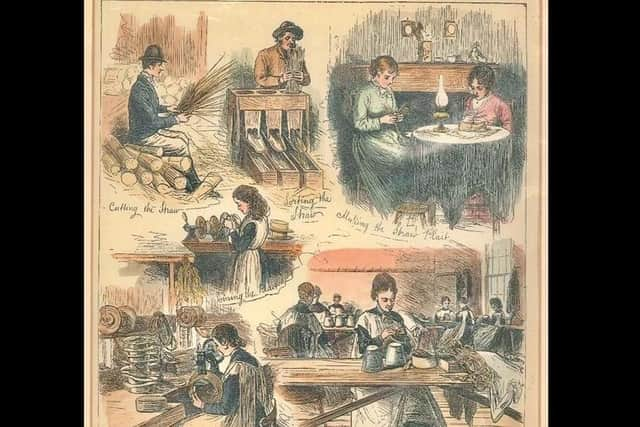Factfile: Who were the straw plaiters of Luton and what did they do?
and live on Freeview channel 276
Plans are progressing for Plaiters' Lea conservation area (see here), with four other heritage areas to follow in High Town, Town Centre, Rothesay and Luton South.
The straw plaiting industry began in Luton and the surrounding areas in the mid-17th century and gradually increased in importance as straw hats became widely popular.
Advertisement
Advertisement
After imported plaits from Italy were halted during the Napoleonic wars (1803-1815), straw grown from the Chiltern Hills was more commonly used.


Many of the peasantry across Beds, Bucks and Herts turned to straw plaiting as it was more profitable than other work. It was a particularly popular trade for women and reached its peak in the mid-19th century.
“The term ‘plaiter’ refers to one step - plaiting straw to create strips which were then sewn into hats - in straw hat production,” according to a report to the council's executive.
“Other steps in making straw hats included splinting, milling, sewing, blocking, dying, stiffening, trimming and finishing,” said the report.
Advertisement
Advertisement
“The name Plaiters’ Lea is not therefore fully reflective of the industry activity within the conservation area.
“During the peak of hat manufacturing, the River Lea was polluted by industrial effluent, such as bleach and dyes.
“Today the River Lea is cleaner and is seen as a feature of the town.
“The river is less visible in the town centre as it is mostly culverted, although it’s open in a section between Guildford Street and John Street within the conservation area.
Advertisement
Advertisement
“Plans are in place to further open it on Silver Street,” added the report.
“Currently, the term ‘Hat District’ is more commonly used when referring to ‘Plaiters’ Lea’ in documentation and presentations to clarify the area being discussed.
“The change of name is proposed to give the conservation area a clearer identity and brand more recognisable to modern residents and encourage visitors to the town, while continuing to appeal to those with a historical interest.
“And it more fully reflects the industry that took place within the conservation area.”